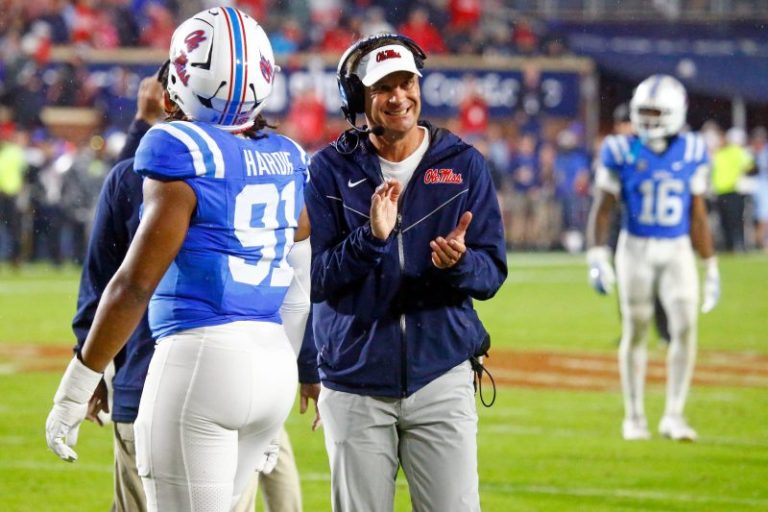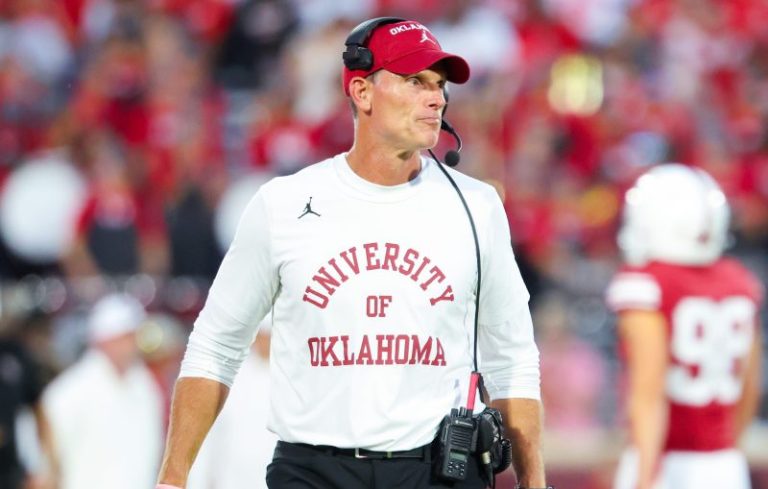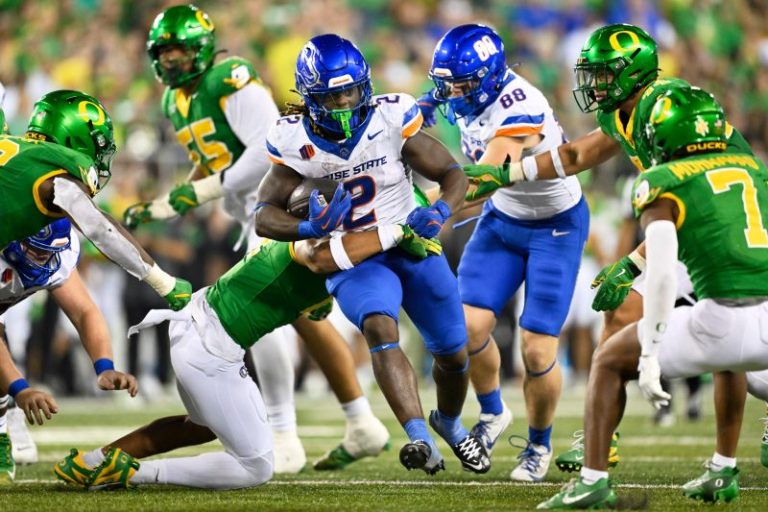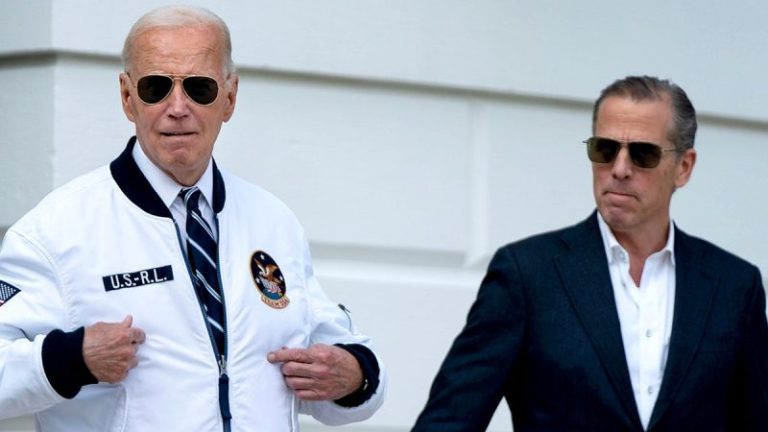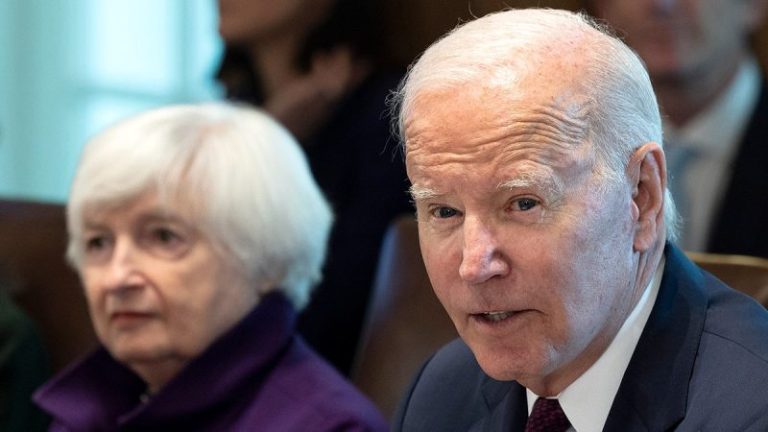Lane Kiffin stood in front of the cameras last week to celebrate the best recruiting class he’d gotten as the Mississippi football coach, and praised one staff member by name initially – general manager Billy Glasscock – for “putting everything together.”
What that meant to Kiffin didn’t become clear until a few minutes later, as he spoke about college football’s transfer portal and the anticipated arrival of revenue sharing. Through a proposed settlement in a class-action lawsuit against the NCAA and the power conferences, schools would be able to directly give current players in any sport money from a pool of millions for use of their name, image and likeness.
“I think you’re going to see outrageous prices in this portal,” Kiffin said. “It’s great for players, but you’re going to see guys get paid way more than you could ever imagine because now everybody has this money that will be coming in and, again, there’s no structured system. It’s not like the NFL. Everybody doesn’t have great general managers and have this nailed how to do it.”
Everybody might need to, though.
The latest movement in the professionalization of college sports is the addition of a general manager to the hierarchy of a football program to oversee personnel and scouting departments separate from the coaching staff. Industry experts expect the role (and money) tied to these positions to expand while athletics departments adjust on the fly to the ever-changing landscape presented by the introduction of name, image and likeness benefits and the looming reality that the players likely are soon to be paid directly by their schools.
When the general manager title began to surface within college football programs earlier this decade, the hires were often made with traditional high school recruiting in mind. The role morphed in recent years to take on the additional scouting required when transfer restrictions were loosened and the transfer portal became so significant to roster construction. Today, with revenue sharing set to begin as soon as next season, the concept of a general manager in college football is being reimagined, and increasingly more in the mold of its NFL counterpart.
The pool of candidates athletics departments are beginning to hire, consider and consult with include NFL personnel from legal and business backgrounds, as well as CEOs from companies outside football, now that it appears contract negotiations with players and their agents and salary cap management have become instrumental to a team’s success.
There is no consensus yet on what the best model will be to navigate this new frontier of college sports. Only that the football infrastructure most schools relied upon for years wasn’t built to handle what’s about to happen.
“It used to take a village,” Texas A&M coach Mike Elko said last week. “Now it takes an army.”
How much are college football GMs worth?
The rise in importance and the uncertain terrain of a college football general manager can be seen through the varying titles and increasing salaries, as well as recent job hopping at some of the country’s top teams, according to open records requests by USA TODAY Sports in conjunction with its annual examination of college football assistant coaches and strength coaches pay across the nation.
Alabama’s Courtney Morgan is believed to be the highest-paid general manager in the country after several moves in recent years. Coach Kalen DeBoer brought Morgan with him from Washington, after DeBoer had previously hired the former Michigan lineman away from former coach Jim Harbaugh and the Wolverines. Morgan initially signed a contract worth $500,000 annually and Alabama paid $162,504 to buy out Morgan’s contract at Washington. But Alabama then had to fend off reported interest from Southern Cal last offseason by giving Morgan a three-year contract worth nearly $2.47 million this summer. He is set to earn a base salary of $775,000 this season.
Similar moves include:
Michigan and coach Sherrone Moore signed Sean Magee to a three-year contract worth $1.08 million to rejoin the program as its general manager after Magee spent two seasons as the chief of staff for the NFL’s Chicago Bears. He will earn $350,000 this season.
LSU lured Mississippi general manager Austin Thomas with an associate athletics director position and a three-year contract featuring an annual base salary of $425,000. Mississippi then poached Glasscock from his job as director of player personnel at Texas with a two-year contract and a base salary of $425,000.
Marshall Malchow will earn a base salary of $550,000 this season to be Oregon coach Dan Lanning’s chief of staff after Malchow had stints as a general manager at Texas A&M and the director of player personnel at Georgia. Ohio State general manager of player personnel Mark Pantoni, who previously helped build Urban Meyer’s best teams, will make $351,488 this season with the chance to earn more than $270,000 in incentives if the Buckeyes win the national championship. Texas general manager Brandon Harris will earn $264,500.
Elko wanted to bring general manager Derek Miller with him to Texas A&M from Duke badly enough last offseason that the Aggies gave Miller a two-year, $375,000 deal and Texas A&M paid an additional $125,000 to buy out Miller’s contract at Duke.
Less than two weeks ago, Stanford made waves when it announced former star quarterback Andrew Luck would be returning to campus as the Cardinal football program’s general manager and indicated Luck’s role would include coach and roster management, as well as business operations typically handled by a team president at the professional level of sports. “This change represents a very different way of operating our program and competing in an evolving college football landscape,” Stanford athletics director Bernard Muir said in the school’s announcement about Luck’s hiring.
For years, Power Four conference teams expanded their payrolls by adding a collection of analysts and administrators to their coaching staffs. As recently as 15 years ago, most staffs designated one of their assistant coaches as a recruiting coordinator. But resources are now shifting towards personnel equipped to take on roster management roles traditional coaching staffs were never meant to handle.
“In order to compete at the highest level, you have to set up essentially a front office,’ former American Athletic Conference commissioner Mike Aresco said. ‘It’s not just going to be the GMs. It’s going to be the cap manager because you’re going to have the $20 (million) or $23 million you’re spending on players … and the AD is now presiding like a team president. You’re going to have all these people under you doing things that were not done before, and where are Olympic sports going to be in this equation? Schools are going to get hit because it’s just hard to construct this so quickly. It’s going to be extremely complicated.’
‘A mad scramble’ to make college football more professional
University of Oklahoma is addressing this looming complexity in an unorthodox manner. The school announced the hiring of former AT&T chairman and CEO Randall Stephenson to be executive advisor to the president and athletic director to oversee Oklahoma’s implementation of the House settlement payments. Oklahoma athletics director Joe Castiglione said Stephenson’s role will include restructuring the athletics department budget, carving out a more expansive role for the program’s general manager and creating a football structure ‘with elements similar to professional sports teams.’
This comes on the heels of the Oklahoma athletics department using Huron Consulting Group, which advises dozens of Power Four conference athletics departments, to assess its organization earlier this year before announcing structural changes. Oklahoma hired former player Curtis Lofton as its new general manager before this season and created a partnership with former Philadelphia Eagles vice president of football administration Jake Rosenberg as part of its changes.
What were once thought of as recruiting jobs are becoming positions that suddenly carry significant financial and contractual responsibilities.
“The schools that were hesitant about building out this infrastructure have quickly come to realize that their slowness in moving this direction is costly because their coaches are stressed,” said Tim Walsh, the managing director of strategy and operations at the Huron Consulting Group. “There’s a mad scramble to get these structures in place and these people in place.”
But the job description of a general manager remains as amorphous as the NCAA policies revolving around the issues of NIL and revenue sharing.
Buffalo coach Pete Lembo compared the role at South Carolina, where he spent the previous three seasons, as a buffer for coach Shane Beamer to maintain positive relationships with the players and their families (and their agents) in much the same way his agent acts as a buffer between a coach and athletics director during contract negotiations.
“Shane didn’t have to bear the brunt of a lot of those conversations,” Lembo said. “If the head coach doesn’t have to be dealing with a line of guys outside his door every day dealing with NIL and things like that, it just allows the day-to-day operation to be a lot smoother.”
“Someone’s going to have to work on this full-time,” added Walsh. “That’s why this role has evolved over the past year so much because the coaches are going crazy. They have no capacity to deal with this and run the team. … It’s going to be a little inconsistent across the country at first, as institutions try to find that sweet spot, what the coach is willing to accept in terms of delegation of authority to those GMs, but over time I think the GMs are going to become more sophisticated, have better financial people working for them to manage all these contracts and commitments in a way that’s sustainable, and then the coaches will be free to coach.”
Sports attorney Darren Heitner, whose current NIL clients include recent Michigan quarterback signee Bryce Underwood, said it’s still rare that he negotiates with a program’s general manager on contracts. He usually speaks with “collectives, sometimes directly with boosters, oftentimes with head coaches or position coaches, to get an understanding of what offers are, what the terms are, get the terms in writing and negotiate them.”
But Heitner sees the need for a GM more in the professional mold in light of the House vs. NCAA settlement.
“It would be an absolute nightmare for the current structure of the athletic department to try to manage the division of capital up to the cap of the revenue sharing among all athletes,” Heitner said. “The role is a very, very important one, perhaps it’s going to become one of the most important positions in an athletic department under the athletic director.”
That really hit home this year for Lembo.
His son told him he wanted to work in football but had no desire to become a college coach after being there with his father, from Lehigh to Elon to Ball State, and then from Maryland to Rice to Memphis to South Carolina and now Buffalo, where Lembo just completed his first regular season as head coach.
AJ, who’s about to graduate from TCU, is “working with personnel,” Lembo explained, and he encouraged the move because that’s who college football teams are hiring these days.
“You really need a person dedicated to helping the head coach and the football staff manage all this,” Pete Lembo said. “The way this is evolving, I’m very grateful that I got a business degree from Georgetown because this is becoming a lot less about X’s and O’s.”
Follow the reporters on social media @mgiannotto and @ByBerkowitz.

